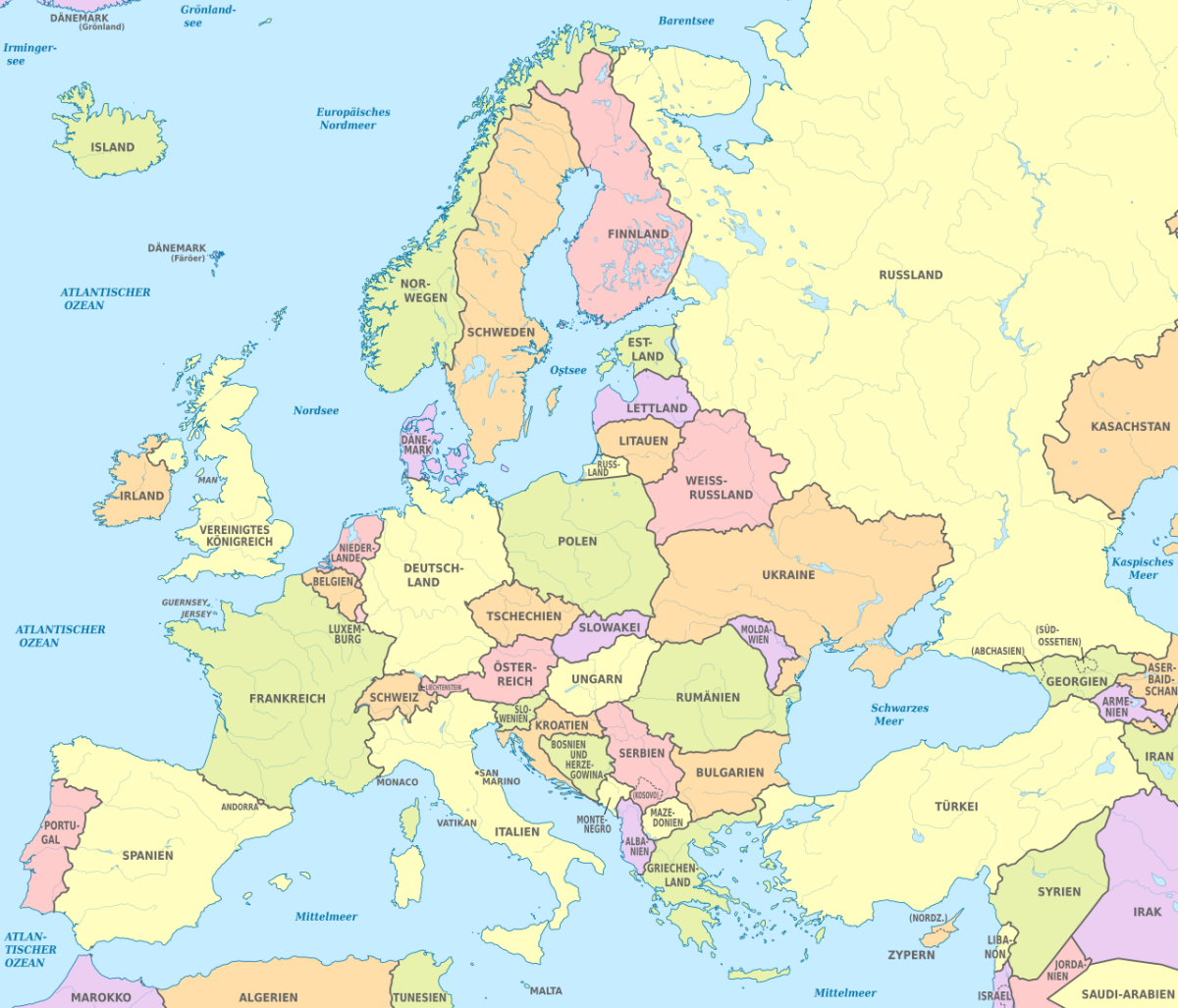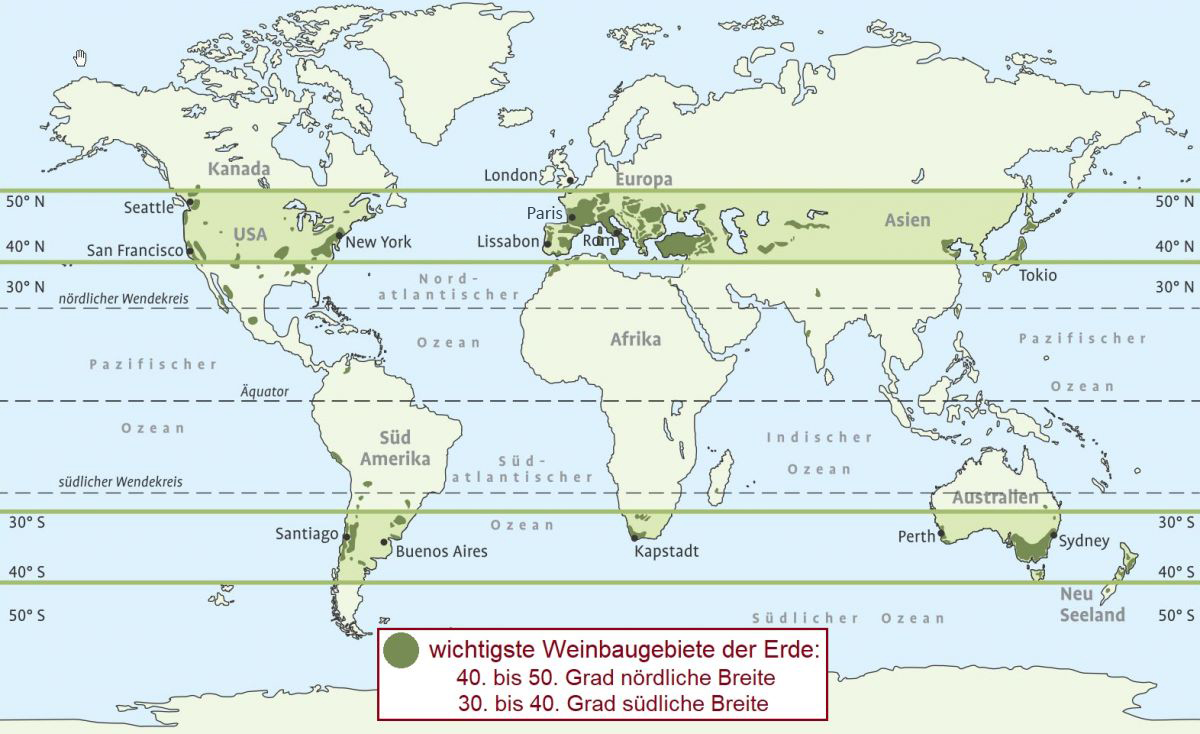The continent of Europe comprises 47 countries with around 10,530,000 km², which corresponds to around 7% of the world's total land area and has around 800 million inhabitants. Almost all countries grow grapes or at least grapes for the production of table grapes, grape juice, grape jelly or sultanas.
These are Albania, Belgium, Bosnia-Herzegovina, Bulgaria, Denmark, Germany, England (see also Great Britain), Estonia, Finland, France, Greece, Ireland, Italy, Croatia, Latvia, Liechtenstein, Lithuania, Luxembourg, Malta, Moldavia (see also under Bessarabia), Montenegro, the Netherlands, North Macedonia, Northern Ireland, Norway, Austria, Poland, Portugal (including the Azores and Madeira), Romania, Russia (partly in Asia), San Marino, Scotland, Sweden, Switzerland, Serbia, Slovakia, Slovenia, Spain (including the Canary Islands), the Czech Republic, Turkey (mostly in Asia), Ukraine (including the Crimean peninsula), Hungary, Wales, Belarus and Cyprus.

Vineyards and wine production
In 2022, the area under vines worldwide totalled 7,254,512 hectares, which at around 73,000 km² is relatively close to the size of Austria (84,000 km²). This refers to all uses such as wine, grape juice, table grapes and sultanas, including young vines that are not yet in production.
A total of around 80 million tonnes of grapes were harvested worldwide. Around 47% were wine grapes (table grapes 45%, sultanas 8%), of which 258 million hectolitres of wine were produced. This corresponds to 34.4 billion 0.75 litre bottles. EU countries accounted for 3.3 million hectares of vineyards (45%) and 161 million hectolitres of wine (62%). Compared to 2021, there was a slight decrease in vineyard area (0.4%) and wine volumes (1%).
Vine belt
The geographical areas where quality viticulture is possible under optimal conditions and vines can thrive are known as the vine belt. This is where 95% of the most important areas are located. They lie from 40 to 50 degrees north and from 30 to 40 degrees south. However, there are also vineyards in between, mostly at higher altitudes. The criteria for the suitability of quality viticulture are called viticultural suitability.

Further information
See further lists under Africa, America, Equator, Asia, European Union, New World, Oceania, South America, Tropics and USA, as well as all countries under wine production volumes (vineyard areas and wine volumes).
Map: por TUBS - Esta imagen vectorial, CC BY-SA 3.0, Enllaz
Vine belt: The winegrower 1 - Viticulture, Ulmer Verlag 2019, 4th edition
Voices of our members

In the past, you needed a wealth of encyclopaedias and specialist literature to keep up to date in your vinophile professional life. Today, Wine lexicon from wein.plus is one of my best helpers and can rightly be called the "bible of wine knowledge".
Prof. Dr. Walter Kutscher
Lehrgangsleiter Sommelierausbildung WIFI-Wien